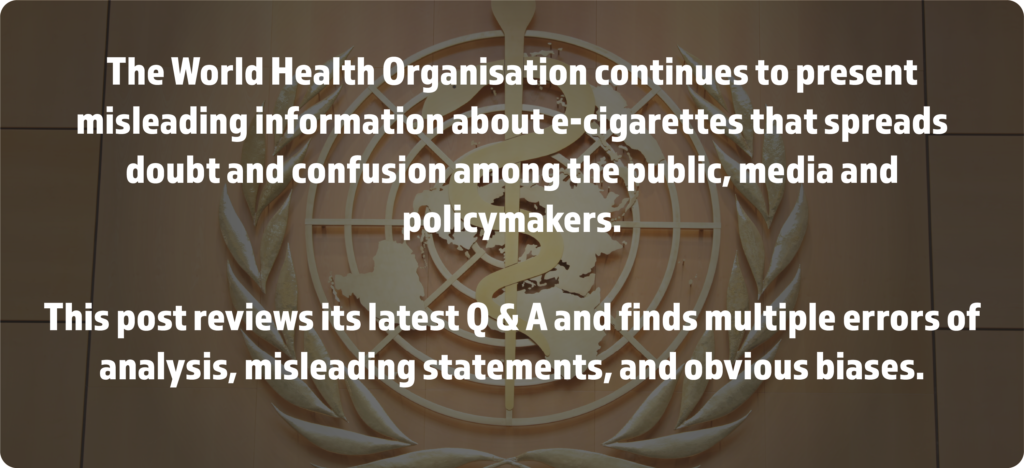Republished from Clivebates.com with the consent of the author


WHO avoids a comparison between secondhand smoke and secondhand aerosol. Again, WHO uses the words “potentially” and “potential” to avoid saying anything about how toxic or how risky. In my own Q&A on vaping and harm reduction, I highlight three key differences between secondhand smoke and secondhand vape exposure:
- The quantity emitted. Most of the inhaled vapour is absorbed by the user and only a small fraction is exhaled (15% or less, depending on the constituent). In contrast, about four times as much environmental tobacco smoke comes directly from the burning tip of the cigarette than is exhaled by the smoker. There is no equivalent of this “sidestream smoke” for vaping.
- The toxicity of the emissions. Tobacco smoke contains hundreds of toxic products of combustion that are either not present or present at very low levels in vapour aerosol. Vapour emissions do not have toxicants present at levels that pose a material risk to health. Exposure to nicotine, itself relatively benign, is unlikely to reach a level of pharmacological or clinical relevance.
- The time that the emissions remain in the atmosphere. Environmental tobacco smoke persists for far longer in the environment (about 20-40 minutes per exhalation). The vapour aerosol droplets evaporate in less than a minute and the gas phase disperses in less than 2 minutes.
The main issue with vaping in public is etiquette and consideration for others. At this stage, there is nothing to suggest that indoor vaping presents a material risk to bystanders. But that does not mean there should be a license to vape at will anywhere. It means the owner of a property should determine the policy for their premises. A government override of these property rights can only be justified if there are material risks to bystanders or workers.
Written by Clive Bates




